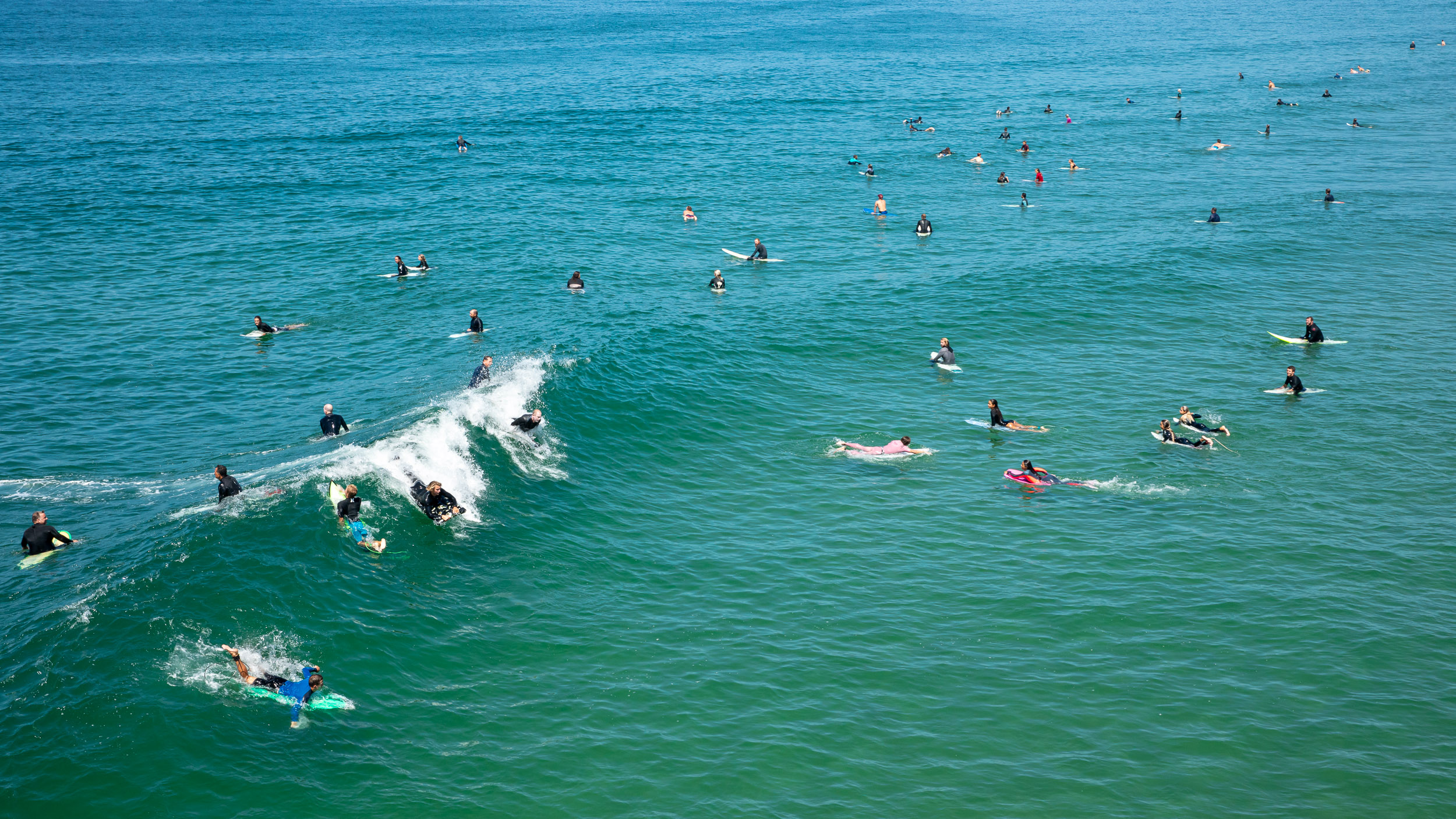Sharks 101: Dispelling myths around the ocean's most feared fish
Sharks are here. But then again, they have been and are closer than you think.
In a recently published study, researcher Patrick Rex ’22, a researcher in Cal State Long Beach’s Shark Lab, discovered that juvenile white sharks unknowingly co-exist with swimmers, surfers and paddle-boarders in the waters of Southern California. His findings debunk many myths beachgoers have about sharks and some of the fears generated by Hollywood.
“They really don't want anything to do with us.” Rex said. “The other the other big myth is – and this kind of goes hand-in-hand – is that if you see a shark close to you, it's there to eat you or bite you or are dangerous."
Rex’s findings are based on hours of drone footage shot in the past year, which was part of a two-year study funded by a state grant to research sharks’ behavior.

Rex points out that there are known facts about sharks: Yes, they bite. Yes, we should be wary of them. Yes, we should avoid them. But the water is safe to enter this summer.
Here are a few myth-busting facts as Sharks at The Beach and Science in the Hall 2023 approaches:
MYTH
All sharks have huge teeth and will attack humans
There are at least 400 species of sharks that can be placed into eight groups, and new ones are being identified all the time - from the 5.5-inch American pocket shark to the 46-foot whale shark. Only about 30 species, however, are known to attack humans. Most sharks are completely harmless.
FACT
But the teeth
Yes, sharks have big teeth and a lot of them, as many as seven rows of teeth along their gums, and up to 300 teeth in total.
MYTH
Sharks see humans as tasty food
Humans are not appetizing to sharks. According to Rex, humans taste bitter to sharks, more balsamic vinegar than cake. Sharks hunt for seals or dolphins, or look for invertebrates, such as squid or clams.
FACT
Punch a shark in the nose
If you come into a close encounter with a shark, punching the snout will give you time to get away. The nose is where electro sensory organs are located, so it is hypersensitive. Rex said that is not a swimmer’s only option -- the eyes or gills are sensitive areas as well. “Really do anything to encourage the shark to let you go,” Rex said.
MYTH
I will get attacked if I swim in the ocean
There were no reported shark bites in any of the 26 Southern California beaches surveyed from January 2019 to March 2021, according to the Shark Lab. Of the millions of beachgoers around the world who swam in the ocean in 2018, there were only five shark-related human deaths.
FACT
Sharks have a sixth sense
Through electroreceptors (small gel filled sacs) in their snout, sharks can detect electrical field produced by animal’s heartbeats. These sacs conduct electrical impulses and are then transmitted to the shark’s brain to help them find their host.
MYTH
All shark attacks are fatal
More people die from bee stings or lightning strikes than by shark attacks. According to Rex, about 30 people die each year from shark attacks, which means a person has a one in 300 million chance of being killed by a shark. A shark attack most often occurs when a shark mistakes a person for a seal or other animal.


















